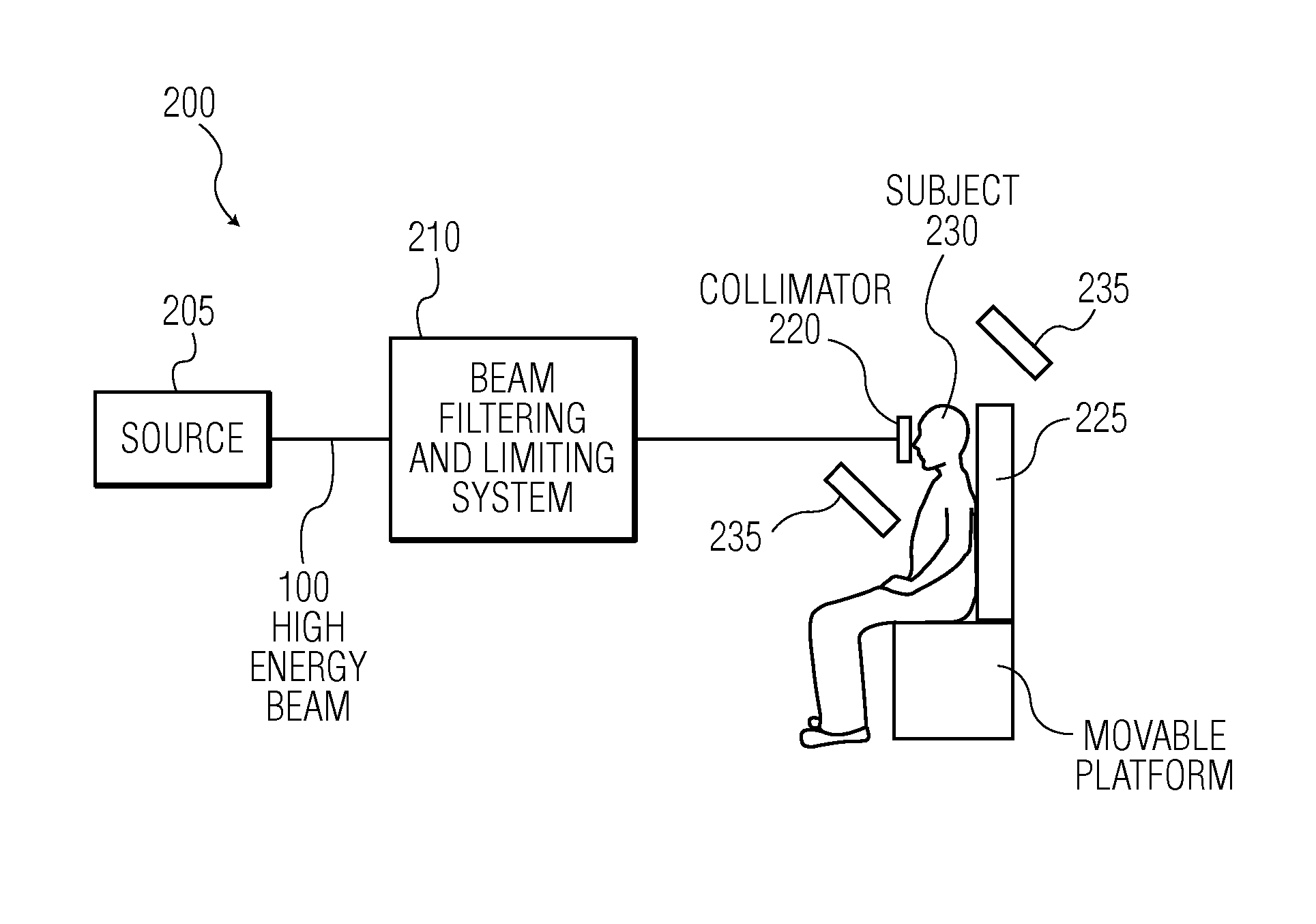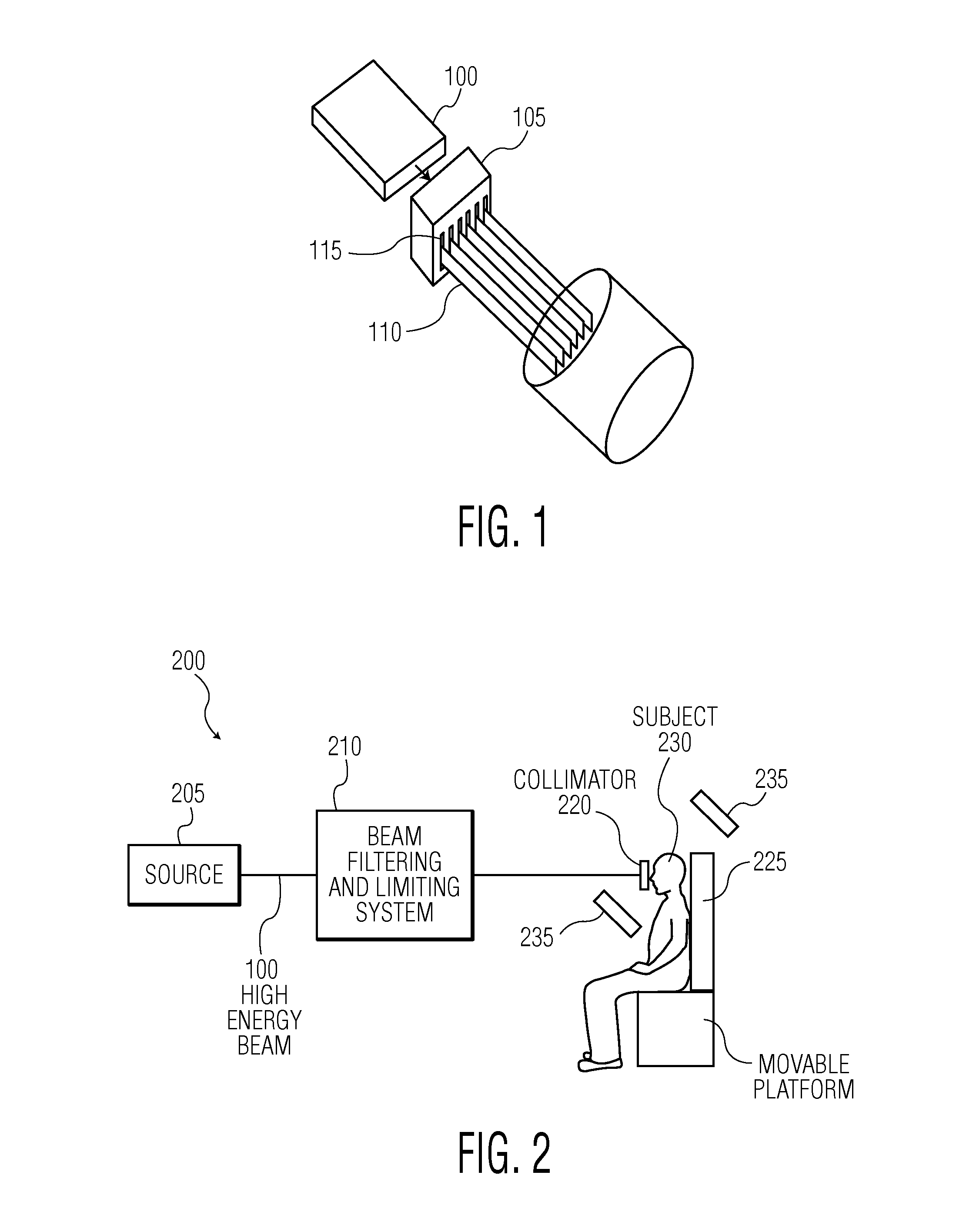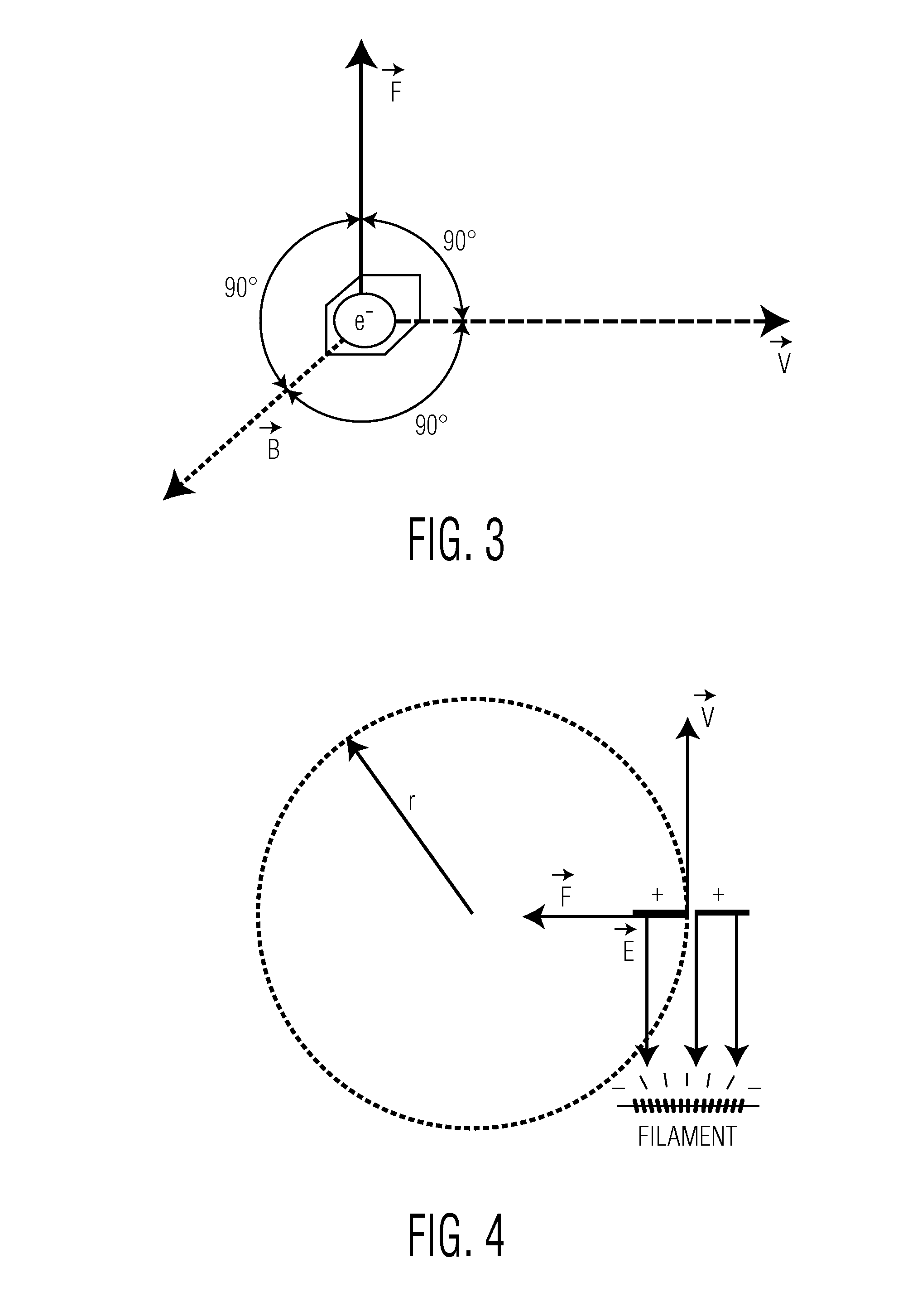Magnetic confinement for microbeam radiation damage area
a radiation damage area and magnetic confinement technology, applied in radiation therapy, x-ray/gamma-ray/particle irradiation therapy, therapy, etc., can solve the problems of not providing a radiation therapy method, patients often take many days and weeks to complete the treatment, and cannot be completely satisfactory and effective in all instances. , to achieve the effect of quick yet safe treatment of patients
- Summary
- Abstract
- Description
- Claims
- Application Information
AI Technical Summary
Benefits of technology
Problems solved by technology
Method used
Image
Examples
Embodiment Construction
[0022]Referring now to the drawings, in which like numerals refer to like components or steps, there are disclosed broad aspects of various exemplary embodiments.
[0023]FIG. 1 illustrates a method for producing microbeams using a collimator. The collimator 105 may include a plurality of parallel slits 115 in a vertical direction. A high-energy radiation fan beam 100 that may be narrow in the vertical direction and wide in the horizontal direction may pass through the collimator 105. Because the collimator 105 is made of a high-Z material, it blocks portions of the incident x-ray radiation of the high-energy radiation fan beam 100. The portion of the high-energy radiation fan beam 100 that passes through the slits 115 of the collimator 105 forms the microbeams 110. The microbeams 110 may be used to treat a subject. Depending upon the vertical height of the fan beam 100 relative to the size of the treatment area, the subject may have to be moved relative to the microbeams 110 in order ...
PUM
 Login to View More
Login to View More Abstract
Description
Claims
Application Information
 Login to View More
Login to View More - R&D
- Intellectual Property
- Life Sciences
- Materials
- Tech Scout
- Unparalleled Data Quality
- Higher Quality Content
- 60% Fewer Hallucinations
Browse by: Latest US Patents, China's latest patents, Technical Efficacy Thesaurus, Application Domain, Technology Topic, Popular Technical Reports.
© 2025 PatSnap. All rights reserved.Legal|Privacy policy|Modern Slavery Act Transparency Statement|Sitemap|About US| Contact US: help@patsnap.com



